Inflammation is the major culprit behind acne. When the pimple heals over time, new cells are produced. Sometimes, these new cells contain excessive melanin—a pigment that gives the skin its color. When some cells have more melanin than others, darker patches, called acne spots, appear on the skin. This condition is also known as post-inflammatory hyperpigmentation and its occurrence is higher among people of color.
Whenever the skin inflammation prolongs, the appearance of acne spots becomes more likely. These spots are more distressing than the acne itself for some people. The majority of acne patients suffer from this form of hyperpigmentation to some extent. People with higher levels of inflamed breakout have more and darker spots. Picking or squeezing the pimples raises the chance of these spots. While these spots fade over time, they persist or become permanent in some cases. As they affect self-esteem, many people seek acne spot treatment.
Notably, anti-acne medication and procedures also tend to reduce dark spots, especially when they target inflammation. They cut down the span of inflammation and thus help neutralize hyperpigmentation. That is why the treatments for pimples and hyperpigmentation overlap most of the time.
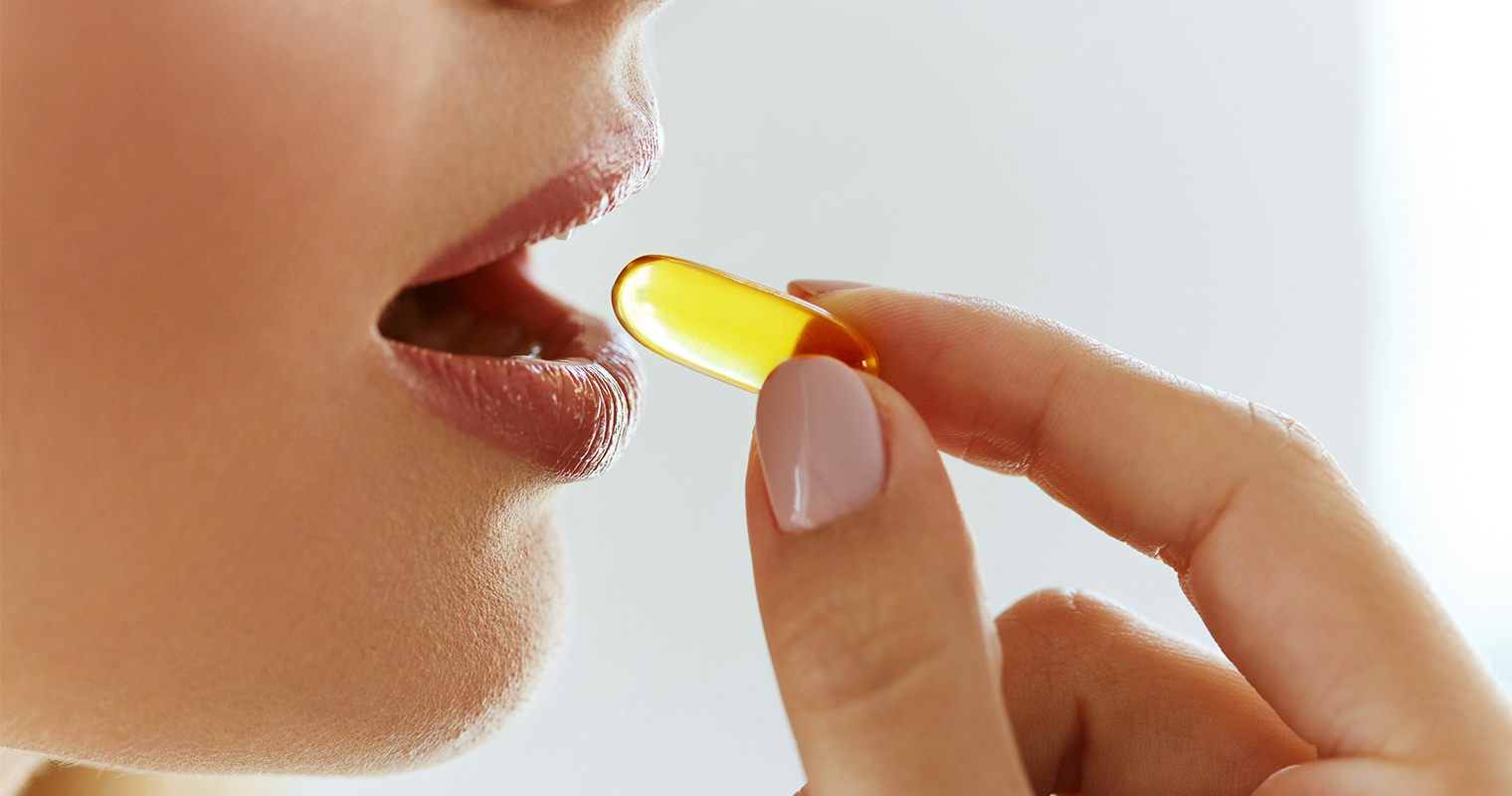
What are the best spot treatment for acne?
The best spot treatments for acne include several topical applications and physical procedures. Here are a few of these:
A. Topical treatment
These products are used for spot acne treatment:
Alpha Hydroxy Acids (AHAs)
AHAs, specifically glycolic acid, are very effective in treating acne spots. These acids are known to accelerate the skin’s exfoliation process, which reduces the appearance of hyperpigmentation. That is why they are a common ingredient on over-the-counter whitening skincare products.
AHA treatments are strong and effective. They can be attained with a prescription.
Azelaic acid
Another effective compound for spot treatment, azelaic acid has anti-inflammatory properties. It reduces inflammation in less time and ultimately alleviates acne and hyperpigmentation. Apart from being anti-inflammatory, it also depigments the skin by preventing the proliferation of abnormal melanocytes (melanin-producing cells).
Hydroquinone
This phenolic compound is a bleaching agent that removes the spots and inhibits the release of melanin. This spot treatment works effectively for all skin tones. It is deemed as the major treatment for pimples-related hyperpigmentation. Its efficacy increases significantly when it is combined with other agents like antioxidants, retinoids, glycolic acid, and corticosteroids.
Retinoids
These compounds manifest biological skin-lightening effects. They effectively reduce the spots both alone and in combination with other agents. They have strong anti-inflammatory properties. They reduce the quantity as well as the proliferation of melanocytes.
Third-generation retinoids like Adapalene are a vital ingredient in creams and gels for the treatment of PIH, whereas a first-generation retinoid – oral Isotretinoin – is an effective treatment of severe acne and the related hyperpigmentation.
Kojic acid
A natural bleaching agent, this compound is derived from a fungus and used for acne-related pigmentation and age spots. It inhibits the activity of tyrosinase, an enzyme that catalyzes the production of melanin. It is combined with glycolic acid and hydroquinone for enhanced results. In the US and some parts of Asia, Kojic Acid is a common ingredient in skincare products for lighter complexion and spot treatment.
B. Procedural treatment
Procedures used for acne spot treatment are as follows:
Chemical peel
This procedure involves using acids to remove the outer layer of the skin after which the skin becomes smoother, brighter, and more toned. Chemical peels for spot treatment contain beta-hydroxy acids like salicylic acid or AHAs, especially glycolic acid. The concentration of chemicals in this procedure is higher than in the creams and serums.
This procedure effectively reduces the appearance of acne spots. Mostly, it entails removing the outer-most layer (epidermis) only, but in severe cases, the middle layer (dermis) is also targeted.

Microdermabrasion
This procedure employs small crystals or diamond flakes and a hand-held suction device to remove the skin’s outer layer. It effectively removes the acne spots and gives better results on fair skin. It is a simple, non-invasive procedure with fewer side effects.
Laser therapies
The skin-lightening agents are a popular choice for the treatment of dark spots. However, lasers are becoming an effective alternative to physical procedures and topical applications. Green, red, and near-infrared lasers are used to target the synthesis and storage of melanin within the cells. These lasers are pigment-specific, but their energy can be absorbed in the epidermis and may cause complications like scars and blisters.

How to choose and use the best acne spot treatment?
There are multiple methods to treat acne spots. Some of them involve systematic procedures while others just need topical application. Here is how you can choose the acne spot treatment that suits you well.
1. Know the factors that contribute to the development of acne
Acne is an inflammatory condition characterized by the appearance of blemishes and pimples on the skin. It can lead to scarring and spots on the skin and have psychological effects. There are four major factors contributing to the development of acne. Most acne treatments target these factors.
Excess sebum production:
An increase in the hormones leads to spiked sebum (oil) production and secretion. The excessive sebum combines with the dead skin cells and clogs the pores. Bacteria lying in the pores activates and causes inflammation, which leads to pimples and blemishes.
Hyperkeratinization:
Hyperkeratinization refers to the abnormal shedding of skin cells. The rapid cell shedding renders accumulation of dead cells in the pores, which clogs the pores. The sebum production also increases. The skin debris combines with sebum and clogs the hair follicle. The bacterial activity aggravates the situation and inflames the skin.
Propionibacterium acnes proliferation:
Propionibacterium acnes is the bacteria responsible for acne and many other skin infections. It spreads in areas where oxygen is absent and thus, clogged pores are viable for its activity.
The risk factors for acne include hormonal changes, intake of medications like lithium or testosterone, consumption of carbohydrate-rich foods like chips and bagels, genetic factors, and stress.
2. Look for the pimple-fighting ingredients
The pimple-fighting ingredients mostly target inflammation and thus can help with acne spots as well. When using an acne spot treatment, check if the product includes any of these ingredients. If it contains most of these compounds, the product would work well. However, be mindful of the concentrations of these compounds in the product you are using. These compounds may exert side effects if used beyond the safe amount.

Benzoyl peroxide
Benzoyl peroxide is a topical disinfectant and is also used as a peeling agent for acne treatment. It has antibacterial properties, prevents pores from clogging, and removes the dead skin cells. It is an effective treatment for mild to moderate acne. When combined with other antibiotics, its efficacy increases. It gives the best results when used with topical retinoids like Adapalene.
Salicylic acid
A beta-hydroxic acid, this compound stimulates keratolysis (the breakdown of keratin) and has anti-inflammatory properties. It helps mitigate both pimples and hyperpigmentation. It also has antibacterial and antifungal effects. SA is a vital ingredient in many over-the-counter medicines for acne.
Retinoids
Used as monotherapy for acne, retinoids are one of the most effective treatments for severe forms of acne. They are used in anti-acne gels and creams in concentrations ranging from 0.01 to 0.1 percent. They contain the clogging of pores and reduce the existing blocked pores. They decrease the sebum production and neutralize the shedding of skin cells. Having anti-inflammatory properties, these compounds target all the factors of acne and thus are deemed as one of the most effective acne treatments.
Azelaic acid
This compound inhibits the activity of bacteria, Propionibacterium acnes and has anti-oxidant as well as anti-inflammatory properties. When combined with benzoyl peroxide or AHAs, it becomes even more effective in treating pimples. It also breaks down keratin in the skin, which helps get rid of the dead skin cells that get trapped in keratin.
Ascorbic Acid
Vitamin C or ascorbic acid (AA) is an antioxidant found in vegetables and fruits. It has skin-lightening effects and manifests anti-inflammatory effects. It is used in 5 to 10 percent concentrations and is effective in depigmentation as well.
F. Soy
Soy can effectively mitigate acne by targeting the hormones. It has antibacterial properties and is quite effective in reducing pimples when combined with retinol and salicylic acid.
3. Understand how to use the product
First, heed your dermatologist especially if you are using any acne medication. Use the recommended dosage. The medication is for skin use only, so avoid contact with the mouth, nose, eyes, and any damaged skin area.
In case of using a lotion or solution for spot treatment for acne, apply a thin film to the affected areas of the skin once or twice daily. Always clean your face before applying the product and pat dry. Wash hands after application. Do not rinse off the medication instantly and let it sit for a few hours so it penetrates the pores.
If the product contains salicylic acid, wet the affected area before application. Rub the solution for 10-20 seconds; do not scrub. Rinse it off and pat dry. If you feel dryness in the affected area, use the product less frequently and consult your doctor.
Do not use any spot treatment product in a quantity larger than prescribed or for a longer period than instructed. Read and follow the usage directions given on the product’s packaging.
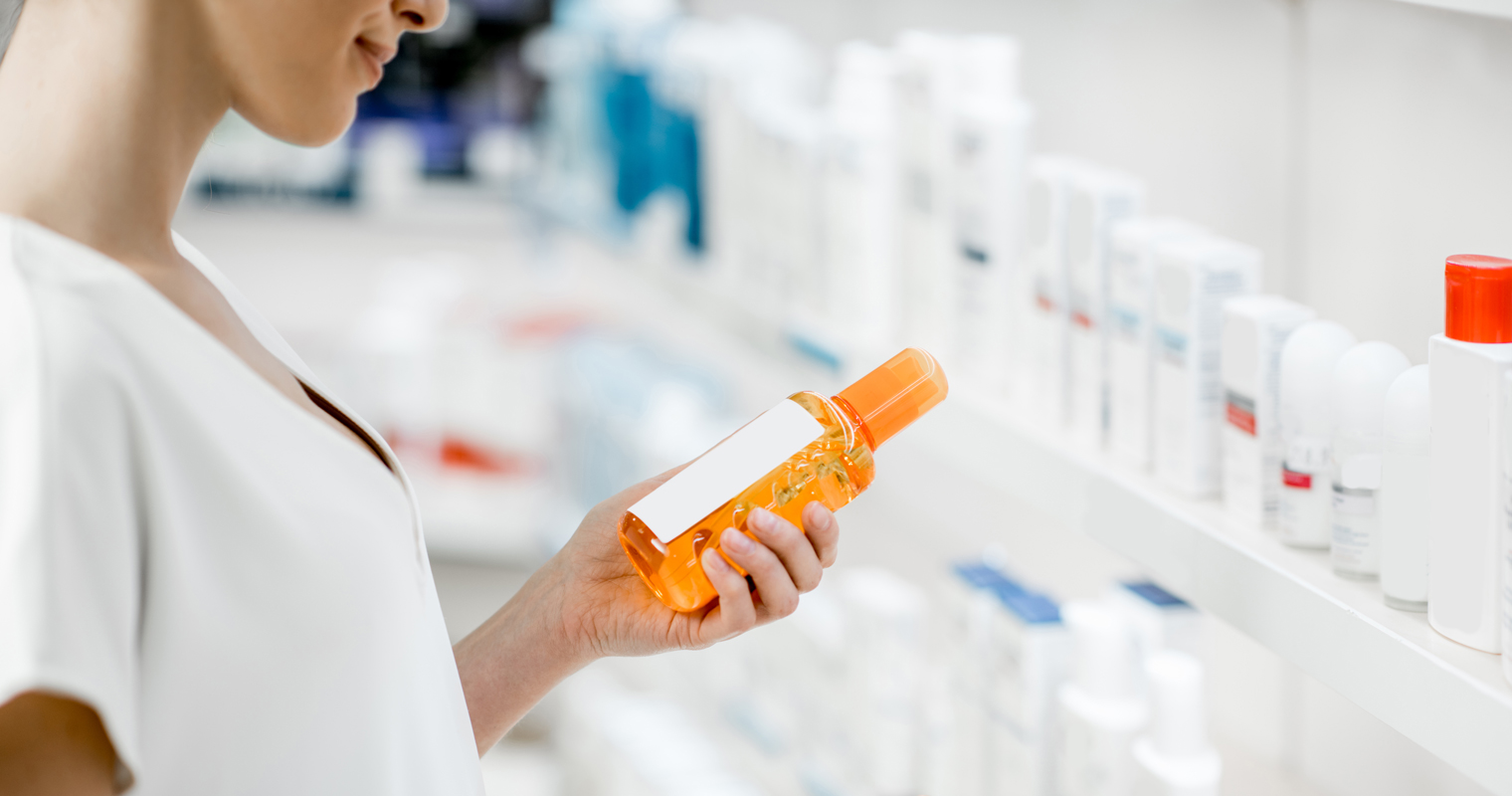
4. Moisturize
Most acne spot treatments contain retinoids, benzoyl peroxide, and salicylic acid, which can cause skin irritation or dryness. It is important to moisturize the skin for better results and keeping the skin smoother and intact.
Evidence shows that moisturizers can augment the results of anti-acne medications. In fact, they can help improve acne symptoms independently. Many moisturizers have anti-inflammatory properties. Some of them even contain pimple-fighting ingredients like retinol and benzoyl peroxide. Studies show that moisturizers, especially the ones containing aloe vera and witch hazel, help a lot with acne. So, use a good-quality moisturizer if you are using acne spot medication.
5. Consider Probiotics
Acne spots are a result of acne. While taking care of the blemishes and spots that acne leaves behind is important, it is equally important to control acne as well.
Acne is a result of multiple factors coming into play. The exact cause of acne remains unclear, but a large amount of scientific data suggests that skin microbes have an important influence on controlling and aggravating acne.
| Microbiome: All microorganisms that live on and inside the human body. Probiotics: Live microorganisms that are extremely beneficial to the host. |
Research shows that gut microbiota (the microorganisms present in the gut) are involved in the causal process of acne. They affect the skin through their interaction with the skin microbiome and by influencing the immune system. An imbalance of these good and essential microbes can cause acne breakouts.
And so, restoring the gut microbial balance and skin microbiome balance is the new development in acne treatment. And for these reasons, oral probiotics and microbiome-containing skincare products are gaining popularity in the skincare industry.
Probiotics help modify some internal factors causing acne and prevent acne breakouts and hence, ance spots. They provide protection to the lining of the gut. Of these probiotics, lactobacillus is the best studied, and it is being used to treat acne. Oral and topical use of this probiotic helps calm acne by reducing inflammation.
Oral probiotics support the health of the gut and skin by promoting good bacteria and topical application improves the balance on the skin and improves acne.
Less acne means fewer acne spots.
BLACK PAINT has, therefore, introduced a microbiome-skincare product line that contains lactobacillus in it. These probiotic topical products are excellent for acne-prone skin. Some of the tried and tested products from this line include Oil Water, Rose Water, and Black Paint Soap.
BLACK PAINT Acne Spot Treatment
BLACK PAINT provides many products that can help with acne and related hyperpigmentation. These products are 100 percent natural and organic with powerful ingredients that improve the skin condition and promote overall health. They can be combined to formulate a skincare regime for acne spot treatment. From cleansing to moisturizing, these products can cover all the anti-acne routine bases.
Best of all, BLACK PAINT has a microbiome product line that offers highly-effective acne treatment through their probiotic content. These products not only contain all organic components, but they also have in them the good bacteria – Lactobacillus – from the human microbiome. In fact, Lactobacillus acidophilus is one of the first bacteria to be used in the treatment of acne. Lactobacillus has anti-inflammatory properties and improves skin hydration, two important things to work on in the process of acne treatment.
Having a natural skin flora ingredient in BLACK PAINT products multiplies the positive effects by accelerating wound healing, protecting against bad bacteria, and maintaining the hydration of skin.
This product is a deep-pore cleanser that targets clogged pores and helps with acne and blackheads. Its main ingredient is Kishu Binchotan Charcoal, which has strong cleansing powers. It cleans out the pores by extracting the debris and its 30 types of organic plant oils help moisturize the skin on the go. Its probiotic content helps mitigate inflammation and mitigates bacterial activity.
Soak the Black Paint Soap in warm water. Apply it directly on the face when its surface melts. Massage with your hands for 30-40 seconds and then rinse. Put the soap in a cool place and let it dry. Also, keep the soap away from humidity and heat.
It is an organic sponge made from vegetable fiber and kneaded with Binchotan charcoal. The sponge comes with excellent blackhead extracting properties. The fine fibers of the sponge also help in gentle skin exfoliation.
Exfoliation is especially beneficial for acne-prone skin as it increases the cell turnover and removes the dead cells on the superficial layer. Note that excessive exfoliation can hurt the skin surface. However, Black Konjac Sponge is a perfect blend of delicate and abrasive properties. The fibers of the konjac sponge are unique in the sense that each fiber is encapsulated in water, hence providing it extra protective effect. There are no preservatives or fragrances in the sponge – two elements that are not good for acne-prone skin.
Rose water is an excellent toner for healing acne-prone skin. It has antibacterial and anti-inflammatory properties to reduce redness and to control bacterial overgrowth, respectively. It regulates sebum production – a major factor in promoting acne in the case of oily skin, and also helps improve wound healing and reduces scarring.
Individuals with acne and blackheads commonly face the issue of enlarged pores. The anti-astringent effect of our organic rose water reduces the pore size and gives a smooth texture to the skin.
Rose Water also contains a probiotic called Lactobacillus, which increases the effectiveness of the product. The probiotic speeds up the wound. healing, slows oxidation, protects against bad bacteria, and keeps your skin moist and plump.
One of the reasons for excessive sebum production is skin dehydration. Oil Water contains a balanced mix of plant oils like olive, argan, jojoba, and borage oil that help nourish the skin and keep it hydrated. It also contains rosehip and cranberry oil that are rich in vitamin C, a desirable ingredient to reduce pigmentation and protect from sun damage.
Each bottle of Oil Water contains about 2000 stalks of damask rose water and damask rose oil, both well-known for their anti-inflammatory and pore-tightening effect. Oil Water is also fortified with Lactobacillus, a probiotic that helps improve wound healing, protectsagainst bad bacteria, slows oxidation, and keeps the skin moist and plump.
References:
https://www.ncbi.nlm.nih.gov/pmc/articles/PMC3080563/
https://www.ncbi.nlm.nih.gov/pmc/articles/PMC2921758/
https://www.ncbi.nlm.nih.gov/pmc/articles/PMC3366450/
https://www.ncbi.nlm.nih.gov/pmc/articles/PMC4025519/



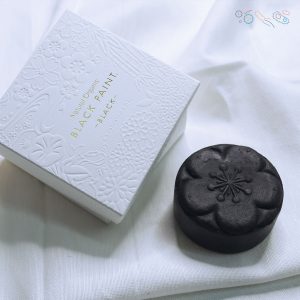 Black Paint Soap
Black Paint Soap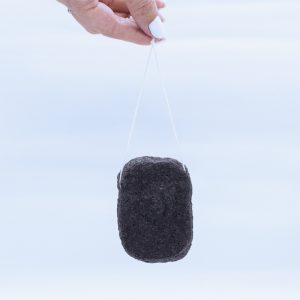 Black Konjac Sponge
Black Konjac Sponge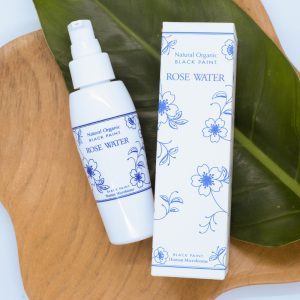 Rose Water
Rose Water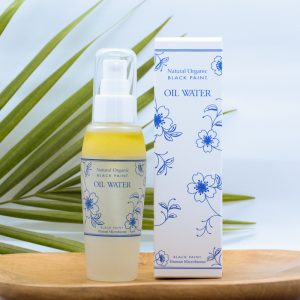 Oil Water
Oil Water



